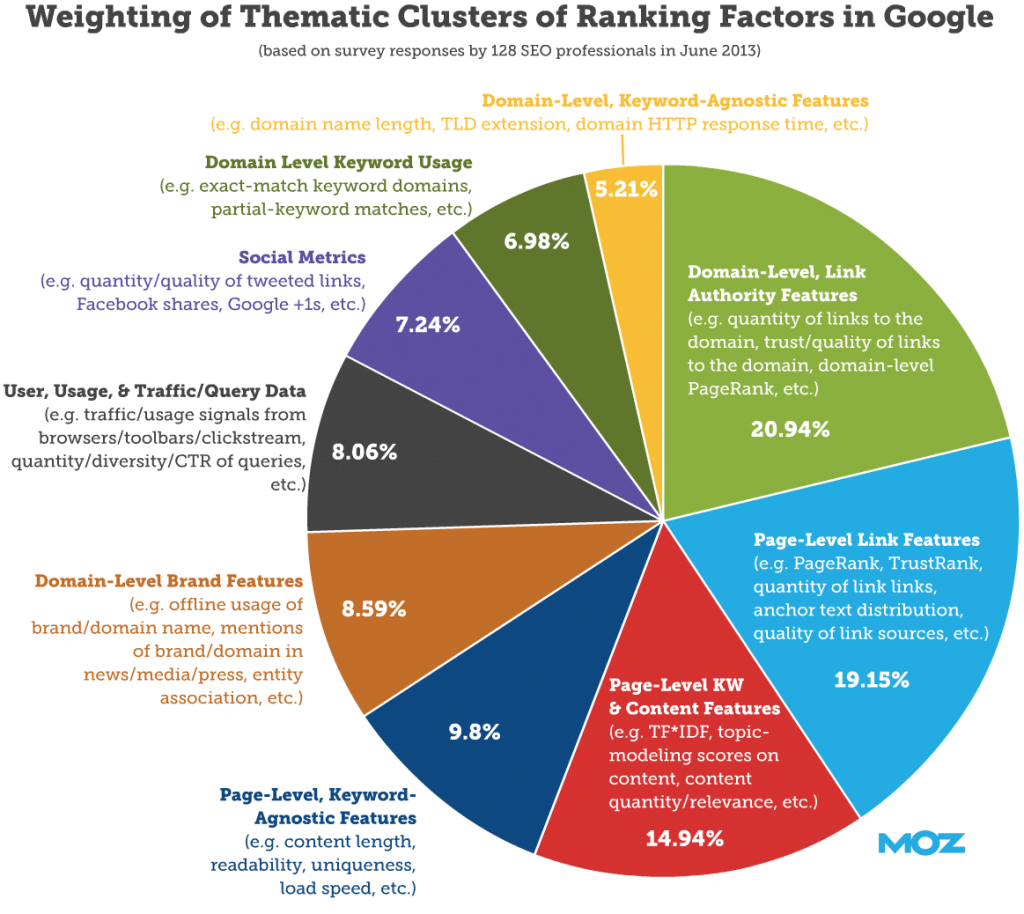Do you remember the days when SEO was a game of quantity over quality?
… you’d research your keywords, sprinkle them liberally through your site, and hope that Google would pick up on them and promote you to the hallowed ranks of the Page One.
And then 2013 came along, Google rolled out their Hummingbird algorithm, and everything changed.
Hummingbird marked the start of a series of changes (and numerous animal names) that steadily moved the focus of our search strategies from keyword to human-focused.
This shift changed search forever, and for the better (I’m sure I wasn’t the only marketer who found the old keyword-stuffing methods unpleasant).
Now, instead of looking at individual words, Google tries to divine the meaning of a query from the context of the entire sentence.
What does this mean for you?
It means that now, the SEO winners are those who understand what their audience is looking for, and create content that is valuable to them.
Sounds simple. And so much more enjoyable than keyword stuffing, right?
So how do you do it?
Like so many other things in life, today’s SEO is – finally – about quality, instead of quantity. So how do we go about it?
Here are 7 tips that will get you started.
1 Write for people, not bots
It sounds obvious, doesn’t it?
But the exciting fact is that we’ve now reached a point where the principles of good marketing finally align with the principles of good SEO.
For anyone in charge of web content this simply means using your keywords in a natural, unforced context: good for Google, and good for your readers, too.
2 Know your customer
Rather than asking the question “How can I increase the number of visitors to my site?” try asking “Who do I want to come to my site, and how can I help them?” Sure, the number of visits to your site might go down a little, but your overall success will go up (See this great infographic for the numerous benefits of high quality content marketing).
As with so many other things, having a deep, personal understanding of your customer will be your greatest ally here.
3 Plan your content with care
Writing for humans doesn’t mean less research: it means more. It means you still need to do your homework (headline, key phrases, images etc) before you write: but you do it all in the shoes of your customer.
Here are some thought starters to get you going:
- What stage are my customers at in their buying journey?
- What’s on their mind when they start typing their search query?
- What sort of information can you give them that would make their lives easier / more enjoyable / more interesting, right now?
4 Focus on high quality, shareable content
This simply means creating content that your audience will love.
This (this, my friends!) is the secret sauce. Because by focusing on content that your audience finds useful / entertaining / informative / [insert adjective of choice here], you increase its shareability.
The diagram below (thanks to the Businesses Grow blog) illustrates beautifully how unimportant keywords become when you’re producing targeted, unique, high quality content.

5 Know that social shares mean improved search rankings
And the net result of all this social sharing your content is going to get? Not just happy customers (hooray!) and increased website visits (double hooray!), but also real, quality lasting links (jackpot!).
Why jackpot, you ask? Because those high-quality links not only increase site traffic, they’ll also help your Google ranking, too.
The image below (and oldie but a goodie from 2013: thanks Moz!) shows that these external links count for nearly 50% of a page’s SEO ranking.

(Bet that got you thinking, hey?)
6 Take all SEO formulas with a pinch of salt
Even the most diehard SEO expert will admit that SEO formulas are a bit of a slippery fish. No one really knows how they work, and – just when you think you’ve got the hang of it – they go and change all over again. What’s worse, you only find out some time after the event: thanks Google for keeping us on our toes!
But you know what never changes or goes out of fashion? Producing content that’s valuable to your customer. And that human focus is the key benchmark that will tell you if your SEO strategy is going to work
7 Put a marketer in charge of SEO
By ‘marketer’ I don’t just mean someone with marketing in their job title. I mean someone who is a true head-and-heart marketer: someone who ‘gets’ your customers – their pains, joys, needs and frustrations – and is prepared to build their content strategy around them.
Don’t get me wrong: this could well be someone from a technical background, but primarily it needs to be someone who gives a shit about your customer. Someone who can keep them completely front of mind while focusing on SEO imperatives.
Writing for humans: 6 signs that show you’re on the right track
- You are relentlessly focused on opportunities to improve user experience.
- You are interested human-centric metrics (like average session length and number of shares) as opposed to bot-centric metrics (like keyword density).
- You plan content around the needs of the customer.
- You don’t start content planning without a detailed persona of your reader.
- You are focused on high quality, original, shareable content, rather than the ‘churn and burn’ variety.
- You are committed to creating an engaging, helpful website that allows users to do what they came to do.
Want to know more about creating content that’s loved by humans and search engines alike?
Read about the key ingredients for effective Content Marketing: or give us a shout to talk through some ideas.